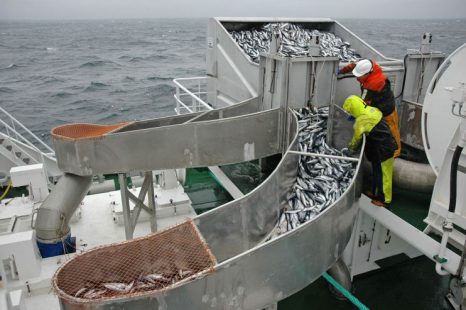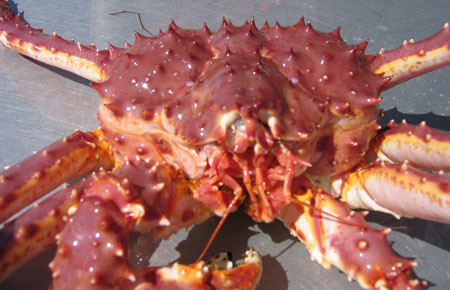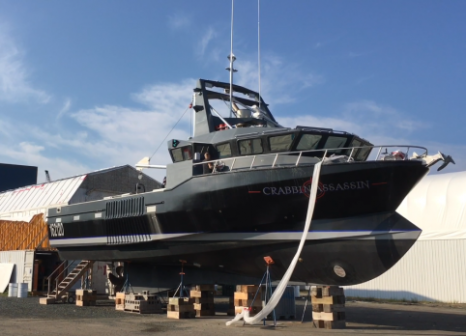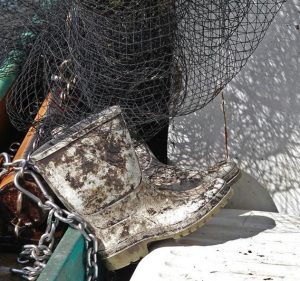Daily Archives: September 28, 2017

Plymouth’s fishing community speak of their grief after losing ‘great bloke’ Tony
Members of Plymouth’s fishing community have spoken of their heartache following the death of a much-loved trawler man. Following the tragedy off Plymouth’s coast on Tuesday evening, friends and colleagues have described Welshman Tony Jones as a friendly and caring man, who will be sorely missed. This morning flowers had been left at the gates of Plymouth Fisheries, where Tony’s boat, the Solstice was kept. Bill Crossman, who has worked at the fisheries for many years, said Tony was an experienced fisherman, and a “great bloke”. Video,click here to read the story 22:02
Heartbroken family pray for missing dog Donnie after fishing tragedy – Springer Spaniel Donnie has been missing since Tuesday night’s tragedy which claimed the life of much respected fisherman Tony Jones. click here to read the story 9/29/2017 15:58
New Miramichi Bay Conservation Areas worry fishermen
 The federal government has named two new marine conservation areas to protect important fish and their habitat, but some Nova Scotia fishermen say they’ve already lost too much ground on the ocean bottom. The Department of Fisheries and Oceans announced the Miramichi Bay Conservation Area in New Brunswick waters on Wednesday, covering 1,550 square kilometres of water where the Miramichi River empties into the Gulf of St. Lawrence.,, George Zinck, president of the Prospect Area Full-Time Fishermen’s Association, said his members opposed the creation of the new conservation area, but are more concerned about the potential loss of additional fishing grounds. click here to read the story 20:34
The federal government has named two new marine conservation areas to protect important fish and their habitat, but some Nova Scotia fishermen say they’ve already lost too much ground on the ocean bottom. The Department of Fisheries and Oceans announced the Miramichi Bay Conservation Area in New Brunswick waters on Wednesday, covering 1,550 square kilometres of water where the Miramichi River empties into the Gulf of St. Lawrence.,, George Zinck, president of the Prospect Area Full-Time Fishermen’s Association, said his members opposed the creation of the new conservation area, but are more concerned about the potential loss of additional fishing grounds. click here to read the story 20:34

The value of fish landings in Shetland last year was up by 30 per cent compared to 2015
Seventy two thousand tonnes of fish worth around £79 million was landed in Shetland, representing a one per cent decrease in quantity on 2015. Nearly 70 per cent of all landings were of pelagic species, which enjoyed a rise in price, while demersal accounted for around one quarter. Mackerel was the most landed fish, with over 40,000 tonnes coming into Shetland, while herring amounted to 9,471 tonnes. But 2016 saw the lowest amount of pelagic species landed in Shetland in the last five years, with around 8,000 tonnes more brought into the isles in 2014. click here to read the story 17:42

Commercial fishing for Southeast red king crab to open this fall after six years
Southeast Alaska will open to commercial fishing for red king crab this fall for the first time in six years. The crab population has seen a steady increase, according to state surveys. But whether the opening set for November 1 will be lucrative is still to be seen. Joe Stratman, who is Alaska Department of Fish and Game’s lead crab biologist for Southeast, said the red crab population has been on the rise since 2013. “Basically, in the last four or five years we’ve seen improvement in legal, mature biomass estimates in Southeast,” Stratman said. click here to read the story 15:30

Opinion: Fishing Violations? Cite Captains and Crew
Two recent high-profile incidents involving Montauk party-fishing boats have drawn attention to a problem on the water in which paying customers take too many or too small fish, while the crews, captains, and vessel owners evade responsibility.,,, It also is interesting to note that the state appears to be finally paying attention to how recreational fishing affects fish stocks. For decades the majority of its enforcement efforts was directed toward commercial harvesters, despite statistics that, in many cases if not all, indicated that sportfishing had an equal or greater impact on the resource. click here to read the op-ed 12:05

Once-idle shipyard cashes in on crab boat market
Three years ago, Guillaume Hall was working in the oil patch in Fort McMurray, Alta., one of the hundreds of New Brunswickers who had gone west for work. Today he’s building boats five minutes from where he grew up, in the Caraquet area of northeast New Brunswick. Atlantic Boat Building has 36 employees working two shifts, days and nights and on weekends, year-round. One of the new boats, the Crabbin Assassin, is almost finished. Built for a Nova Scotia fishermen, it looks more like a stealth military vessel than a crab boat.”They have a unique design when it comes to fuel savings, stability, and speed, and you get to go faster with a smaller engine,” Robichaud says. “You save fuel, so more money in the pockets of the fishermen.” click here to read the story 09:35
On This Day – September 28, 1889: Cape fishermen heading for South Africa for mackerel
 A century ago the fishermen on Cape Cod were making plans to spend the winter fishing for mackerel off the Cape of Good Hope off the southern tip of Africa, a distance of almost 8,000 miles away from homeport. For the wives of the Cape’s fishermen that would mean nearly year-round widowhood as the trip a century ago took weeks under the best of conditions and mackerel were believed to abound in South African waters after December 1st, the same fish seen here six months later. The Cape Cod schooners will salt the mackerel and return to Provincetown to sell their catch. The reprint of the story in The New York Times from a century ago is below. click here to read the story 08:18
A century ago the fishermen on Cape Cod were making plans to spend the winter fishing for mackerel off the Cape of Good Hope off the southern tip of Africa, a distance of almost 8,000 miles away from homeport. For the wives of the Cape’s fishermen that would mean nearly year-round widowhood as the trip a century ago took weeks under the best of conditions and mackerel were believed to abound in South African waters after December 1st, the same fish seen here six months later. The Cape Cod schooners will salt the mackerel and return to Provincetown to sell their catch. The reprint of the story in The New York Times from a century ago is below. click here to read the story 08:18
Wondering about the success of this venture? click here to read a bit more about it! pg. 196















































